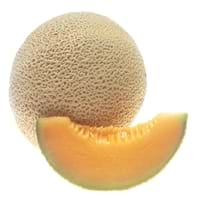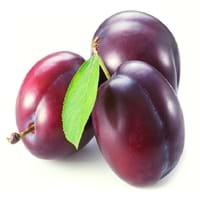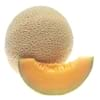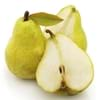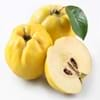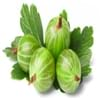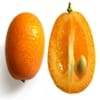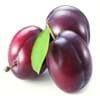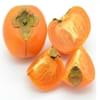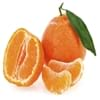Health Benefits
Cancer prevention, Heart care, Improves eye vision, Prevents diabetes, Reduces stress
Cancer prevention, Cures gastro-intestinal troubles, Heart care, Increase in haemoglobin, Prevents diabetes
General Benefits
Boosts immune system, Cures cough, Cures fever, Digestive aid, Eye care, Helps in weight loss
Anti-inflammatory properties, Boosts immune system, Digestive aid, Eye care, Flu treatment, Helps in weight loss, Maintains healthy cholesterol level, Treatment of common cold
Skin Benefits
Anti-aging benefits, Hydrates skin, Skin rejuvenation, Treatment of skin diseases
Anti-aging benefits, Brightens and lightens complexion, Reduces wrinkles, Skin revitalization, Treatment of dark spots
Hair Benefits
Good conditioner, Prevents hair loss, Protects hair
Prevents hair loss, Promotes longer and healthier hair, Protects hair, Remedy for split ends, Treatment of dandruff
Allergy Symptoms
Abdominal pains, Anaphylaxis, Breathing difficulty, Diarrhea, Dizziness, Hives, Itching of mouth, Nasal congestion, Nausea, Vomiting
Abdominal pains, Anaphylaxis, Vomiting
Side Effects
Allergic reaction, Bloating, Indigestion
Allergic reaction
Best Time to Eat
As a snack in the late afternoon, Don't consume at night and before bed, Eat the fresh ones, avoid mixing with any other foods, don't eat after meal., Morning time (before lunch)
As a snack in the late afternoon, Eat the fresh ones, avoid mixing with any other foods, don't eat after meal., Morning time (before lunch)
Vitamin B5 (Pantothenic Acid)
Vitamin C (Ascorbic Acid)
Vitamin K (Phyllochinone)
Calories in Fresh Fruit with Peel
Not Available
Calories in Fresh Fruit without Peel
Not Available
Calories in Canned Form
Not Available
Varieties
Hales Best Jumbo, Sweet 'N Early Hybrid, Hearts of Gold, Ambrosia, Athena, Honey Bun Hybrid, Fastbreak and Superstar
Victoria, President, Czar, Ariel, Avalon and Oullins Gage
Color
Orange
Pink, Purple, Red
Inside Color
Creamy Orange
Yellow
Taste
Juicy, Musky, Sweet
Juicy, Sweet, Tart
Origin
Africa, India
Caucasus
Soil Type
Sandy
Clay, Loam, Sandy loam
Climatic Conditions
Dry, Hot
Cold
Facts about
- Cantaloupe is known as rock-melon in some parts of the world.
- Christopher columbus first introduced cantaloupes to north america in 1494.
- The name 'Cantaloupe' as it is cultivated in papal gardens of cantaloupes, Italy.
- In china, plums are used for production of wine.
- A chemical called amygdalin found in plum seeds, turns into toxic compound in human body.
- Plum tree produces fruit 3-5 yrs after planting.
Other Countries
Iran, Romania, Turkey, United States of America
Bosnia, Chile, India, Iran, Italy, Romania, Serbia, Turkey, United States of America
Top Importer
United States of America
United Kingdom
Botanical Name
Cucumis melo var. cantalupensis
Prunus domestica
Synonym
Cucumis melo var. reticulatus
Not Available
Subkingdom
Tracheobionta
Tracheobionta
Division
Magnoliophyta
Magnoliophyta
Class
Magnoliopsida
Magnoliopsida
Subclass
Dillenhidae
Rosidae
Order
Cucurbitales
Rosales
Family
Cucurbitaceae
Rosaceae
Species
C. melo
P. domestica
Difference Between Cantaloupe and Plum
We might think that Cantaloupe and Plum are similar with respect to nutritional value and health benefits. But the nutrient content of both fruits is different. Cantaloupe and Plum Facts such as their taste, shape, color, and size are also distinct. The difference between Cantaloupe and Plum is explained here.
The amount of calories in 100 gm of fresh Cantaloupe and Plum with peel is Not Available and 46.00 kcal and the amount of calories without peel is 34.00 kcal and Not Available respectively. Thus, Cantaloupe and Plum belong to Low Calorie Fruits and Low Calorie Fruits category.These fruits might or might not differ with respect to their scientific classification. The order of Cantaloupe and Plum is Cucurbitales and Rosales respectively. Cantaloupe belongs to Cucurbitaceae family and Plum belongs to Rosaceae family. Cantaloupe belongs to Cucumis genus of C. melo species and Plum belongs to Prunus genus of P. domestica species. Beings plants, both fruits belong to Plantae Kingdom.
